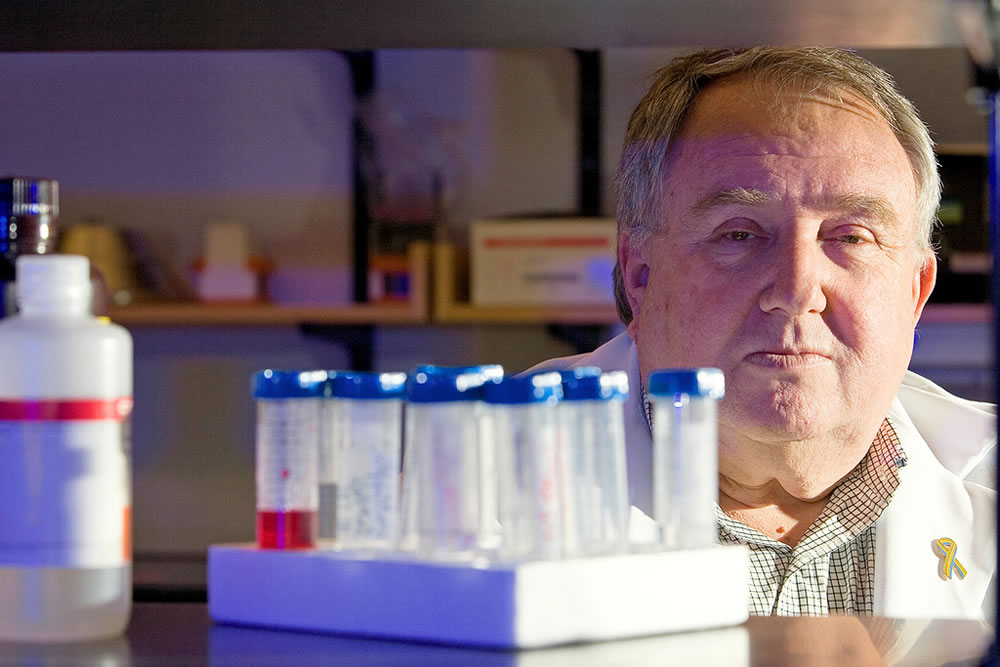The Fine Line of FDA Approval

Learn how you can participate in cancer research. Visit our Introduction to Clinical Trials web pages
What it takes for new drugs to be tested and reach patients
News reports often talk about revolutionary new drugs in development to treat cancer. Or, we'll see a story about a research breakthrough that could change the future of cancer treatment . . . if the drug is approved by the U.S. Food and Drug Administration (FDA) down the road. Sometimes that's the last time we'll hear about it. Other times, it takes years before we'll hear about it again.
What goes into researching and developing a cancer drug and what is required for FDA approval? We sat down with Moshe Talpaz, M.D., associate director of translational research at the U-M Rogel Cancer Center, for a closer look at the FDA approval process.
What is the first part of the process to develop a new drug?
The pre-clinical process is quite elaborate. Academic medical centers like U-M have the role of discovering what governs a disease, to discover the mutation that drives an illness like cancer. We first focus on the biology to show the full sequence of events in the body. We develop various laboratory approaches to demonstrate that shutting off the abnormal protein kills the cancer cell.
Drug companies then get involved to develop what is called a lead compound. Medicinal chemists study many different molecules to identify one that has the characteristics of potentially becoming a drug. A lead compound then becomes the subject for extensive testing on animals to determine whether it has adequate pharmacologic behavior and a good toxicology profile. In other words, that it works safely in the body.
When does research begin with actual patients?
The pre-clinical studies are followed by Phase I testing in humans to find the maximum tolerated dose. We start with very low doses, of course, to check for toxicity. If patients can tolerate it, we try a higher dose. We end up with a safe dose to recommend for use in a Phase II study.
Phase II involves more extensive testing and is where we demonstrate whether the compound is effective and which tumors respond to it. We want to see what percentage of patients with a certain disease respond to the compound, although the number of patients in this phase may not be sufficient for definitive assessment.
Phase III is a randomized study of large groups of patients that compares the potential drug to the current standard of care. If the compound reaches a significant goal, which is acceptable to the FDA, the FDA approves it as a new drug and it is given a trade name.
What is the general time frame for a new drug to be approved by the FDA so it can be available to patients?
From beginning to end, typical clinical drug development takes around seven to 10 years. If a drug is showing remarkable activity and serves an unmet medical need, an accelerated process can go much quicker, maybe around three years after the onset of clinical trials. This is generally speaking, as every drug is unique in its own way.
What do researchers look for in a promising drug?
People may not realize that nine out of 10 Phase I trials fail. A compound may not reach the intended target or it might not be safe for patients because it is too toxic.
Once researchers show that a compound is safe and has activity against the intended target, it will be pursued further. Our goal is to develop therapeutic cancer drugs, but not further injure patients. If severe toxicity occurs during Phase I testing, the compound is unlikely to be further developed. To ensure patient safety, a Phase I study must be tightly monitored and every event must be documented.
What about drugs that go through the accelerated process for FDA approval? Are there disadvantages when drugs go through the process quickly?
As far as cancer drugs go, I believe the FDA approval process is streamlined and efficient. Even though at times it seems like the FDA is overly conservative, I feel it is a fair and well-structured process. If a compound proves to be good and there is no question about it, it moves forward quickly in the approval process.
When a drug goes through the accelerated process, it receives conditional approval from the FDA. This means that testing on the drug continues once patients are using it and the drug must meet additional milestones later, such as survival improvement.
What good things do you see in the future for the development of cancer drugs?
Cancer is now the major focus of drug development. We need new concepts and a better understanding of what targets to go after. We are just beginning the process of discovering targets and developing diagnostic tools.
One project of clinical importance we're working on in the U-M Rogel Cancer Center is the idea of precision or personalized medicine. This involves what is called next-generation sequencing, or studying a tumor's genetic makeup to identify mutations. The idea is to see what mutations can be acted upon and whether we can target them so we’ll have a large selection of compounds available to match specific mutations.
We at the Rogel Cancer Center have also developed a Phase I translational research center. We have a great team and are aiming to partner with drug companies throughout the drug development process.
Read the Fall, 2012 issue of Thrive.
